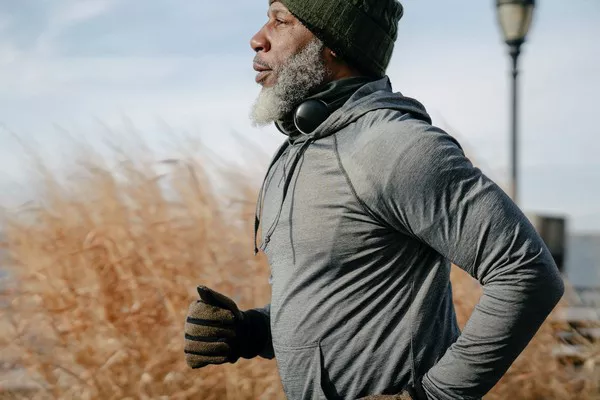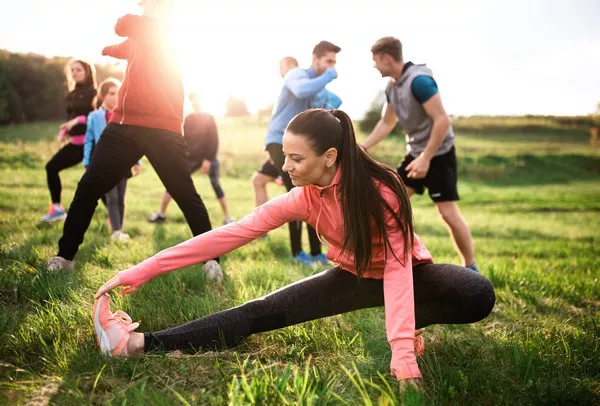As we age, maintaining strength and mobility becomes increasingly important for maintaining independence and overall well-being. Strength training exercises for seniors are crucial in preventing age-related muscle loss, improving bone density, enhancing balance, and reducing the risk of falls. However, it is essential to choose exercises that are safe, effective, and tailored to the unique needs of older adults. This article aims to provide an overview of the best strength training exercises for seniors, including the benefits they offer and important considerations for safe implementation.
Benefits of Strength Training for Seniors
Strength training offers a wide range of benefits for seniors, positively impacting their physical health, mental well-being, and overall quality of life. The following are key benefits of strength training for seniors:
1. Increased Muscle Mass and Strength: Aging often leads to muscle loss, known as sarcopenia, which can result in reduced strength and functional decline. Strength training exercises help counteract this process by stimulating muscle growth and improving muscle strength. Increased muscle mass enhances mobility, balance, and the ability to perform daily activities independently.
2. Improved Bone Health: Osteoporosis, characterized by weakened bones and an increased risk of fractures, is a common concern for seniors. Strength training, particularly weight-bearing exercises, places stress on the bones, stimulating the production of new bone tissue and increasing bone density. This helps to prevent bone loss and reduce the risk of fractures.
3. Enhanced Metabolism and Weight Management: As individuals age, their metabolism tends to slow down, making weight management more challenging. Strength training can help counteract this effect by increasing muscle mass. Muscles are metabolically active tissues that burn more calories at rest than fat. By increasing muscle mass, seniors can boost their metabolism and support weight management efforts.
4. Improved Joint Health and Flexibility: Regular strength training exercises can improve joint health by strengthening the muscles and ligaments surrounding the joints. This added stability can reduce joint pain and discomfort, making daily activities more manageable. Additionally, strength training enhances flexibility and range of motion, allowing for easier movement and reducing the risk of injury.
5. Enhanced Balance and Fall Prevention: Falls are a significant concern for seniors and can lead to severe injuries and a loss of independence. Strength training exercises that focus on balance, such as standing on one leg or incorporating stability exercises, can improve proprioception and strengthen the muscles responsible for stability. This reduces the risk of falls and improves overall balance.
6. Management of Chronic Conditions: Strength training can be beneficial for managing several chronic conditions commonly seen in older adults, including arthritis, diabetes, heart disease, and obesity. Regular exercise improves cardiovascular health, enhances insulin sensitivity, reduces joint pain, and helps maintain a healthy body weight. It can also improve mood and mental well-being, reducing the impact of chronic conditions on overall quality of life.
7. Improved Cognitive Function: Research suggests that strength training exercises may have cognitive benefits for seniors. Regular physical activity, including strength training, has been associated with improved cognitive function, memory, and overall brain health. Exercise promotes increased blood flow and the release of neurochemicals that support brain health and cognitive function.
8. Enhanced Mental Well-being: Engaging in strength training exercises can have a positive impact on mental health and well-being for seniors. Exercise releases endorphins, which are natural mood elevators, reducing symptoms of depression, anxiety, and stress. Additionally, the sense of accomplishment and increased self-confidence gained from progressing in strength training can contribute to improved mental well-being.
Important Considerations for Seniors
Before engaging in strength training exercises, seniors should consider the following important factors to ensure safety and maximize the benefits of their workouts:
1. Consultation with a Healthcare Professional: Before starting a strength training program, seniors should consult with their healthcare provider, especially if they have pre-existing health conditions or concerns. A healthcare professional can provide personalized recommendations, consider any limitations or precautions, and ensure that the chosen exercises are appropriate for the individual’s specific needs.
2. Warm-up and Cool-down: Prior to each strength training session, seniors should perform a proper warm-up routine. This helps increase blood flow to the muscles, raise body temperature, and prepare the body for exercise. A warm-up can consist of light aerobic exercises, such as walking or stationary cycling, and dynamic stretches. Similarly, a cool-down routine involving gentle stretches and deep breathing helps the body gradually return to a resting state and prevent post-exercise muscle soreness.
3. Gradual Progression: Seniors should start with light weights or resistance and gradually increase the intensity and difficulty of their exercises over time. Progression should be slow and controlled to allow the body to adapt and minimize the risk of overexertion or strain. Increasing the weight or resistance by small increments and monitoring how the body responds is crucial for safe and effective strength training.
4. Proper Technique and Form: Maintaining proper technique and form during strength training exercises is vital to prevent injuries and optimize results. Seniors should focus on using the correct muscle groups, maintaining a neutral spine, and avoiding excessive strain or jerky movements. It is beneficial to work with a qualified fitness professional or trainer initially to learn the proper form and receive guidance on exercise technique.
5. Balanced Program: A well-rounded strength training program for seniors should include exercises that target all major muscle groups. This includes upper body, lower body, and core exercises. A balanced program helps promote overall strength, stability, and functional abilities. It is important to avoid overemphasizing certain muscle groups and neglecting others, as this can lead to muscle imbalances and increased injury risk.
6. Safety Measures and Equipment: Seniors should exercise in a safe environment, ensuring proper lighting and clear pathways. The use of appropriate safety equipment, such as stable footwear and supportive clothing, is essential. When using weights or resistance equipment, seniors should ensure they are in good working condition and use proper safety precautions, such as securing weights and using appropriate resistance levels.
7. Listening to the Body: Seniors should pay close attention to their bodies and listen to any signs of discomfort, pain, or excessive fatigue during strength training. It is important to differentiate between muscle fatigue, which is normal, and pain, which may indicate an injury or overexertion. If any discomfort or pain persists, seniors should stop exercising and seek medical advice if necessary.
8. Rest and Recovery: Adequate rest and recovery are crucial for seniors engaging in strength training. The body needs time to repair and rebuild muscle tissue after exercise. Seniors should incorporate rest days into their training schedule, allowing muscles to recover and prevent overtraining. Getting enough sleep and practicing other recovery techniques, such as gentle stretching or foam rolling, can also aid in the recovery process.
By considering these important factors, seniors can ensure that their strength training program is safe, effective, and tailored to their specific needs.
Best Strength Training Exercises for Seniors
When it comes to strength training exercises for seniors, it’s important to focus on exercises that are safe, effective, and target major muscle groups. The following exercises are recommended for seniors to promote strength, mobility, and overall fitness:
1. Squats: Squats are excellent for strengthening the lower body, including the quadriceps, hamstrings, and glutes. Start by standing with feet shoulder-width apart, then slowly lower yourself as if sitting back into a chair. Keep your knees aligned with your toes and your chest lifted. Rise back up to the starting position. For additional support, you can use a chair behind you as a guide.
2. Lunges: Lunges target the lower body, including the quadriceps, hamstrings, and glutes. Stand with feet hip-width apart, take a step forward with one foot, and lower your body until both knees are at 90-degree angles. Make sure your front knee is directly above your ankle and your back knee is hovering just above the floor. Push back up to the starting position and repeat on the other leg.
3. Chest Press: The chest press exercise strengthens the chest, shoulders, and triceps. You can perform this exercise using dumbbells or resistance bands. Sit on a stable surface, hold the weights or bands with your arms bent at 90 degrees, and push forward until your arms are fully extended. Slowly bring them back to the starting position.
4. Seated Rows: Seated rows target the upper back, shoulders, and biceps. You can use resistance bands or cable machines for this exercise. Sit tall on a stable surface, hold the handles with your arms extended, and pull them towards your body, squeezing your shoulder blades together. Slowly release back to the starting position.
5. Step-ups: Step-ups improve lower body strength, balance, and coordination. Stand facing a step or a sturdy platform. Step onto the platform with one foot, followed by the other, and then step back down with the leading leg. Repeat, alternating the leading leg. If needed, you can hold onto a railing or wall for support.
6. Planks: Planks strengthen the core muscles, which include the abdominals and lower back. Start by placing your forearms on the ground, elbows aligned under the shoulders. Extend your legs straight behind you, resting on your toes. Keep your body in a straight line from head to heels, engage your core, and hold this position for as long as you can while maintaining proper form.
7. Bicep Curls: Bicep curls target the muscles in the front of the upper arms. You can use dumbbells or resistance bands while standing or sitting. Hold the weights with your palms facing forward, curl the weights towards your shoulders, and slowly lower them back down.
It’s essential to start with light weights or resistance and gradually increase intensity as you become more comfortable and stronger. Remember to focus on proper form and technique, and if needed, consult with a qualified fitness professional for guidance and support. Tailoring the exercises to your individual needs and abilities is key to a safe and effective strength training routine.
Conclusion
Incorporating strength training exercises into a senior’s fitness routine offers numerous benefits for overall health and well-being. By following the important considerations and engaging in the recommended exercises, older adults can improve their strength, mobility, balance, and overall quality of life. Remember to start gradually, seek professional guidance when needed, and listen to your body. With consistency and proper technique, seniors can maintain their independence and enjoy an active and healthy lifestyle for years to come.
[inline_related_posts title=”Related Topics” title_align=”left” style=”list” number=”3″ align=”none” ids=”763,760,729″ by=”categories” orderby=”rand” order=”DESC” hide_thumb=”no” thumb_right=”no” views=”no” date=”yes” grid_columns=”1″ post_type=”” tax=””]

































